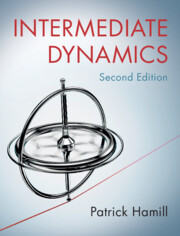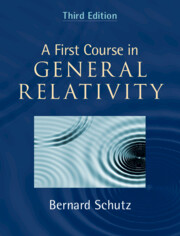Refine search
Actions for selected content:
36885 results in Cambridge Textbooks
Part III - Behaviors and Behavioral Disorders
-
- Book:
- Foundations of Behavior Genetics
- Published online:
- 31 March 2022
- Print publication:
- 07 July 2022, pp 143-276
-
- Chapter
- Export citation
Contents
-
- Book:
- Irrigation Engineering
- Published online:
- 05 August 2022
- Print publication:
- 07 July 2022, pp vii-viii
-
- Chapter
- Export citation
Dedication
-
- Book:
- Principles of Behavioral Neuroscience
- Published online:
- 19 April 2022
- Print publication:
- 07 July 2022, pp v-vi
-
- Chapter
- Export citation
Copyright page
-
- Book:
- Foundations of Behavior Genetics
- Published online:
- 31 March 2022
- Print publication:
- 07 July 2022, pp iv-iv
-
- Chapter
- Export citation
27 - Irrigation Scheduling
- from Part VII - Irrigation Operation and Management
-
- Book:
- Irrigation Engineering
- Published online:
- 05 August 2022
- Print publication:
- 07 July 2022, pp 511-536
-
- Chapter
- Export citation
Index
-
- Book:
- An Introduction to Python Programming for Scientists and Engineers
- Published online:
- 20 August 2022
- Print publication:
- 07 July 2022, pp 729-735
-
- Chapter
- Export citation
Brief Contents
-
- Book:
- Principles of Behavioral Neuroscience
- Published online:
- 19 April 2022
- Print publication:
- 07 July 2022, pp vii-viii
-
- Chapter
- Export citation
9 - Pipeline Hydraulics
- from Part II - Principles of Hydraulics
-
- Book:
- Irrigation Engineering
- Published online:
- 05 August 2022
- Print publication:
- 07 July 2022, pp 145-171
-
- Chapter
- Export citation
7 - Two-Dimensional Diagnostic Data Analysis
- from Part I - Getting Basic Tasks Done
-
- Book:
- An Introduction to Python Programming for Scientists and Engineers
- Published online:
- 20 August 2022
- Print publication:
- 07 July 2022, pp 176-208
-
- Chapter
- Export citation
Dedication
-
- Book:
- Irrigation Engineering
- Published online:
- 05 August 2022
- Print publication:
- 07 July 2022, pp v-vi
-
- Chapter
- Export citation
10 - Managing Files, Directories, and Programs
- from Part I - Getting Basic Tasks Done
-
- Book:
- An Introduction to Python Programming for Scientists and Engineers
- Published online:
- 20 August 2022
- Print publication:
- 07 July 2022, pp 327-352
-
- Chapter
- Export citation
9 - Reading In and Writing Out Text Data
- from Part I - Getting Basic Tasks Done
-
- Book:
- An Introduction to Python Programming for Scientists and Engineers
- Published online:
- 20 August 2022
- Print publication:
- 07 July 2022, pp 261-326
-
- Chapter
- Export citation
Appendices
-
- Book:
- An Introduction to Python Programming for Scientists and Engineers
- Published online:
- 20 August 2022
- Print publication:
- 07 July 2022, pp 706-718
-
- Chapter
- Export citation
Appendix A - List of Units
-
- Book:
- An Introduction to Python Programming for Scientists and Engineers
- Published online:
- 20 August 2022
- Print publication:
- 07 July 2022, pp 706-707
-
- Chapter
- Export citation
Preface
-
- Book:
- Foundations of Behavior Genetics
- Published online:
- 31 March 2022
- Print publication:
- 07 July 2022, pp xxi-xxii
-
- Chapter
- Export citation
Frontmatter
-
- Book:
- Principles of Behavioral Neuroscience
- Published online:
- 19 April 2022
- Print publication:
- 07 July 2022, pp i-iv
-
- Chapter
- Export citation
24 - Land Leveling
- from Part VI - Design
-
- Book:
- Irrigation Engineering
- Published online:
- 05 August 2022
- Print publication:
- 07 July 2022, pp 456-474
-
- Chapter
- Export citation
19 - Border Irrigation
- from Part V - Methods of Irrigation
-
- Book:
- Irrigation Engineering
- Published online:
- 05 August 2022
- Print publication:
- 07 July 2022, pp 332-349
-
- Chapter
- Export citation

Intermediate Dynamics
-
- Published online:
- 02 July 2022
- Print publication:
- 21 April 2022
-
- Textbook
- Export citation

A First Course in General Relativity
-
- Published online:
- 02 July 2022
- Print publication:
- 30 June 2022
-
- Textbook
- Export citation
